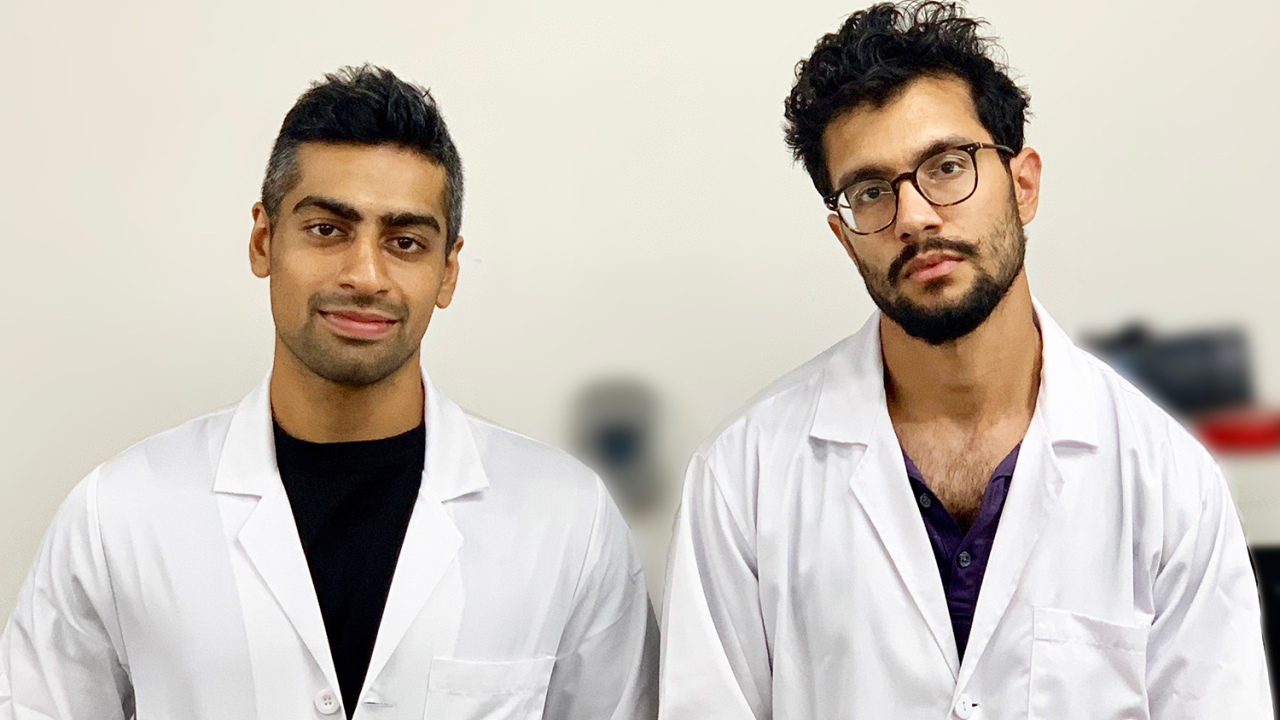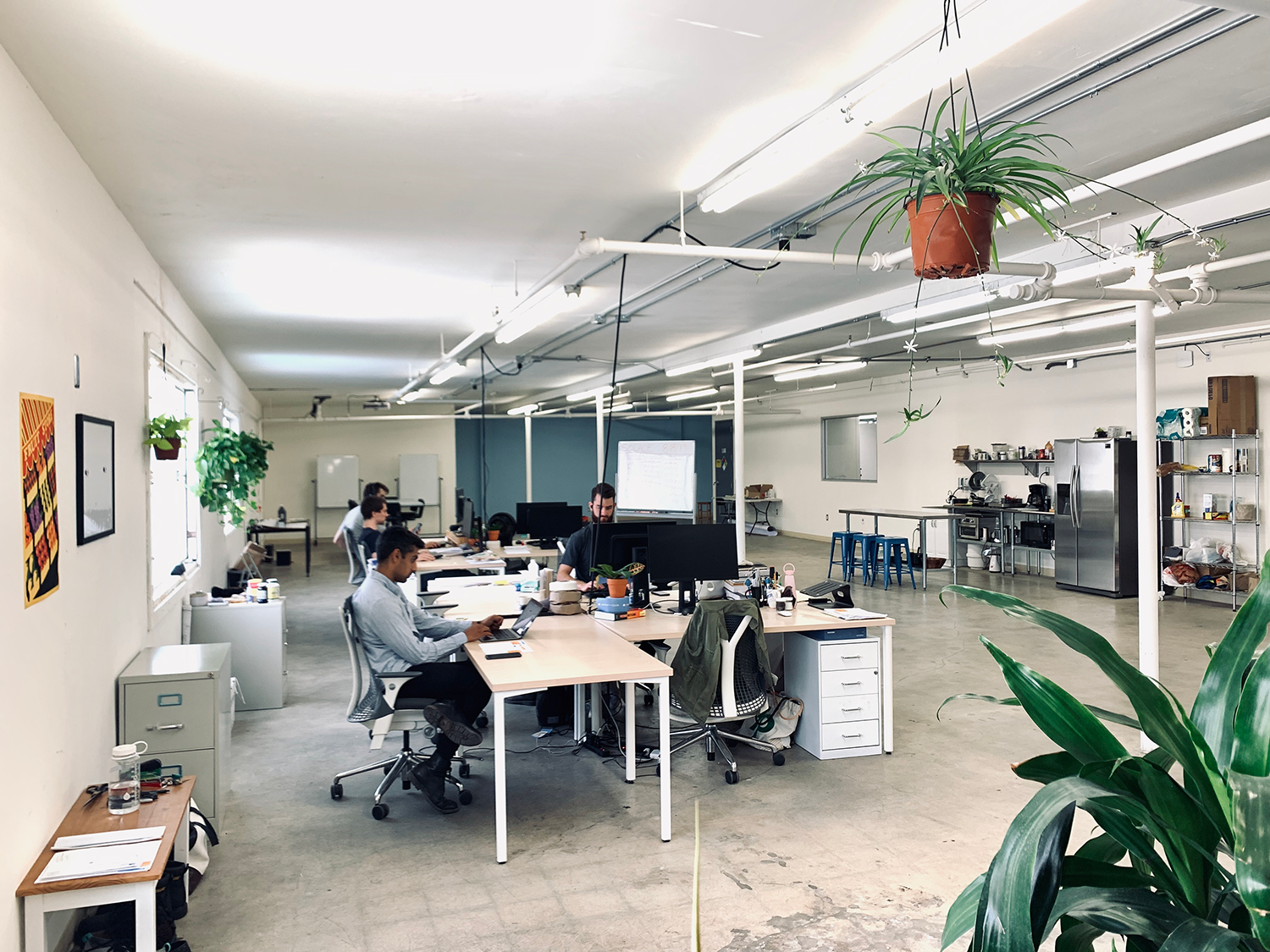
Molecular Recycling Revolution: UC Davis Alumni and ambercycle Founders Talk Sustainable Fashion and Plastic Waste
Quick Summary
- UC Davis alums Akshay Sethi, ’15 B.S. in Biochemistry and Molecular Biology, and Moby Ahmed, ’15 B.S. in Genetics and Genomics, are at the forefront of a recycling revolution
- Their company ambercycle takes the plastics found in clothing and breaks them down into their constituent parts
- Through "advanced molecular recycling," the company uses that material to make new yarns and clothing
When Akshay Sethi and Moby Ahmed roomed together during their senior year at UC Davis, they didn’t expect their relationship to turn into a business partnership. What’s more, they didn’t expect to be at the forefront of a recycling revolution in the fashion and textile industries.
“There was no plan to start a company,” said Sethi, the co-founder of ambercycle. “This just sort of happened because we thought we were working on interesting technology that could be useful to the world.”
According to the U.S. Environmental Protection Agency, discarded clothing is the main source of textiles in municipal solid waste. In 2017, out of the 16.9 million tons of waste generated by textiles, only about 15 percent of it was recycled. The majority of waste, 11.2 million tons, ended up in landfills.
“We developed technology to take that clothing and break it down into its original, constituent materials,” said Sethi, ’15 B.S. in Biochemistry and Molecular Biology. “Once those materials are broken down, we then recover and then make new garments with that material.”
With their materials company ambercycle, Sethi and Ahmed envision a fashion world without plastic waste. And people are taking notice of the entrepreneurs. Sethi and Ahmed recently made the Forbes 30 Under 30 in the manufacturing and industry category.
“We are grateful for the recognition and look forward to the journey ahead,” said ambercycle's other co-founder Ahmed, ’15 B.S. in Genetics and Genomics.
Ambercycle has evolved dramatically since Sethi and Ahmed’s graduation. The company’s initial six-foot workbench has morphed into a full-fledged, venture-backed, 10,000 square-foot facility in Los Angeles. To date, the company has raised several millions in funding.
“What our technology would enable,” said Sethi, “is a world in which nothing is wasted. All of our materials will stay in their own supply chains.”

A million little fibers
Plastics, like polyester and nylon, saturate our clothing. The current, industrial means to recycle those materials are “primitive and technologically repulsive,” according to Sethi and Ahmed.
“Our vision is to make all plastics climate-positive,” said Sethi. “We really believe these are materials that we should treasure and use to improve the human experience. We just have to figure out a way to consume them responsibly.”
Discovering a way to do that started at UC Davis. Working with Associate Professor of Biomedical Engineering Marc Facciotti, the ambercycle team originally genetically engineered microbes to eat and recycle plastics found in clothing. On top of winning gold at the 2012 International Genetically Engineered Machine competition (which Sethi participated in), the innovative methodology won ambercycle a Global Change Award (from the H&M Foundation, which is run by the owners of the H&M clothing company) and $281,000 in funding in 2016. Shortly thereafter, ambercycle was awarded $1,000,000 in SBIR grants from the National Science Foundation and a contract with the US Army to recycle waste polyester at Forward Operating Bases.

But all businesses need to evolve, and in the ensuing years, the technology and company changed to better meet recycling demands.
“We were using microbial technology, but upon discovering a better way to accomplish the same goals using chemistry, we’ve since moved away from it,” said Ahmed. “The biological route, the bugs kind of eat plastic really slow. They’re not as hungry as you’d want them to be.”
Ahmed calls the company’s new technological process, which utilizes principles from green chemistry, “advanced molecular recycling.” The process takes complex mixtures found in clothing and chemically separates them into their constituent materials (specifically polyethylene terephthalate, or PET), which the company uses to create new yarns.
“We use green chemistry to basically process this waste similar to what would happen in an oil refinery or even in certain mining applications,” said Ahmed. “Ore has multiple different stuff in it but you only want to enrich it for certain fractions and you want to separate out different components.”
With the technological changes came a move from their original space in San Francisco to the fashion hub of Los Angeles. In San Francisco, their space was a small workbench rented from another company.
“It was humble roots and a lot of fun,” said Sethi. “But for anything innovative related to apparel manufacturing, LA is the best place in the world.”
Their current space is an industrial facility outfitted with chemistry labs, machine shops and a pilot plant. Currently, ambercycle is in the midst of partnering with several established brands operating in a climate-positive way. They’re also designing their own line of clothing products.

You construct your world, Aggie-style
Sethi and Ahmed exemplify the do-it-yourself mentality characteristic of Aggies. According to the two, the mixture of high-quality education and a relaxed campus vibe allowed their creativity to flourish. They found an idea that piqued their curiosity and stuck with it.
“No one really told us, ‘No’ sternly enough, so we just kind of kept doing it,” said Sethi, reflecting on the journey thus far.
Asked what advice they’d give to current UC Davis students interested in entrepreneurship, the two emphasized the importance of belief in the self.
“The world that we live in is constructed by people that are no smarter than you and me,” said Sethi. “Once you realize that, you can really achieve a lot.”
“Anything is actually possible,” added Ahmed. “Anybody at UC Davis has the capability to do anything.”

